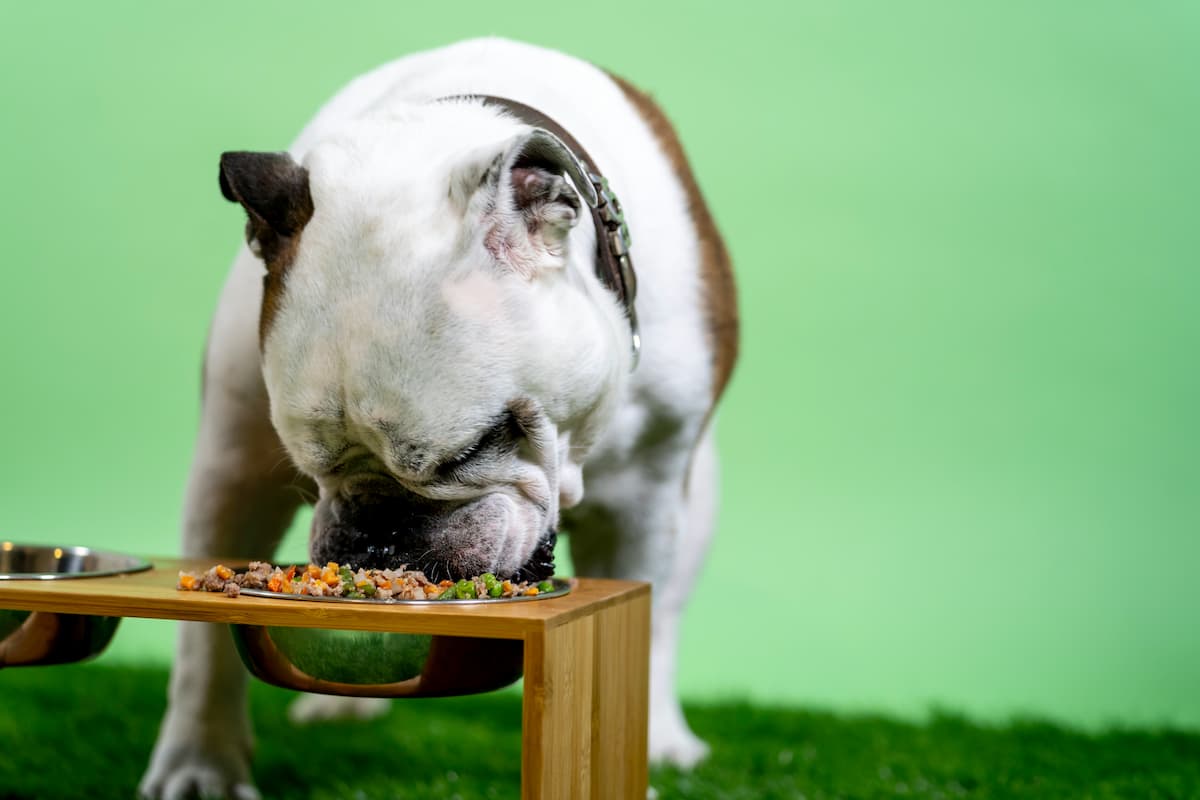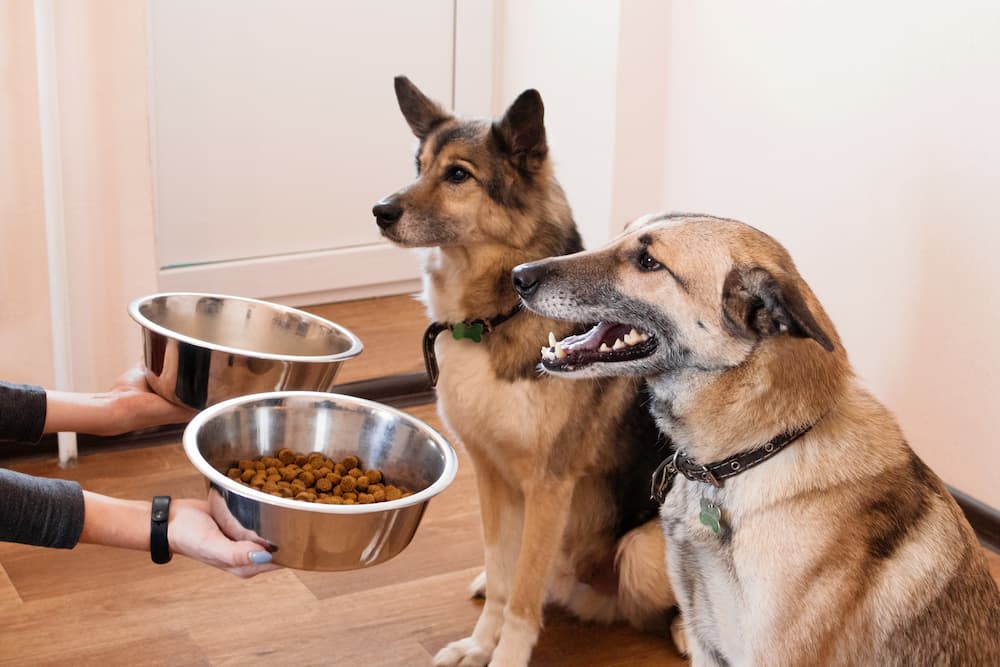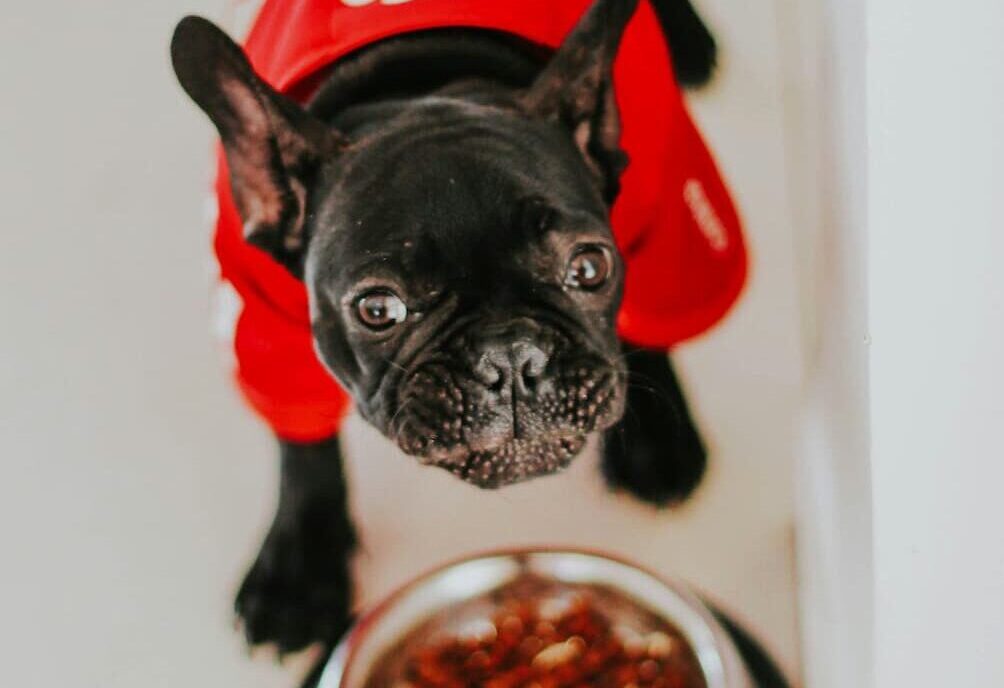Does your dog suffer a bout of diarrhea after changing their food?
Does this unfortunate accident worry about your pet’s health?
This article will help explain this problem to you and give you tips on how to alleviate and avoid it.
Factors Contributing to Digestive Upset and Diarrhea in Dogs
Diarrhea can be a messy and distressing experience for dogs and their owners alike.
One common trigger for digestive upset in dogs is a sudden change in their diet.
You may have noticed that when you switch your furry friend’s food abruptly, they often end up with an upset stomach or diarrhea.
But why does this happen?
Well, our canine companions have sensitive digestive systems that need time to adjust to any changes in their food.
Dogs are creatures of habit, and their bodies are accustomed to the specific nutrients and ingredients in their regular diet.
So when a sudden change occurs, their digestive system becomes confused and reacts negatively.
This can lead to digestive upset, loose stools, and even vomiting.
To avoid these undesirable symptoms, it is crucial to introduce new food gradually, giving your dog’s tummy the time it needs to adapt.
Another factor that can contribute to digestive upset and diarrhea in dogs is the quality and ingredients of their new food.
Dogs, like humans, can develop sensitivities or allergies to certain ingredients such as grains, gluten, or even specific proteins like chicken or beef.
If the new food contains an ingredient that doesn’t agree with your pooch’s tummy, it can lead to diarrhea.
Tips to Successfully Transition Your Dog’s Diet without Diarrhea
To help your furry friend transition to their new diet successfully without dealing with diarrhea, here are some essential tips to keep in mind:
1. Gradual Transition: Start by mixing the new food with their current food in a ratio of 25% new food to 75% old food.
Gradually increase the proportion of the new food over a week or two until it replaces the old food completely.
This gentle transition helps your dog’s digestive system adapt gradually, reducing the chances of diarrhea.
2. High-quality foods: Choose a high-quality dog food that suits your pet’s specific dietary needs.
Look for a brand that uses easily digestible ingredients and avoids common allergens like grains, soy, or artificial additives.
3. Probiotics: Including a probiotic supplement or adding probiotic-rich foods like yogurt to your dog’s diet can promote good gut health.
Probiotics help replenish beneficial bacteria in their digestive tract, which can aid in digestion and minimize the risk of gastrointestinal upset during the transition period.
4. Monitor and Consult: Pay close attention to your dog’s health and stool consistency during the transition process.
If diarrhea persists or worsens despite a gradual change, it’s essential to consult your veterinarian.
They can assess your dog’s specific needs and suggest dietary adjustments or provide additional medical guidance to ensure their health and comfort.
Remember, a gradual transition, incorporating probiotics, and seeking professional advice when needed are key steps to successfully changing your dog’s diet without the unpleasant side effect of diarrhea.
Always prioritize your furry friend’s well-being to ensure they thrive on their new food.
When to Be Concerned about Diarrhea in Dogs
So, when should you be concerned about diarrhea in dogs?
While occasional loose stools may not be a cause for panic, persistent diarrhea that lasts for more than 24 to 48 hours can indicate a more serious problem.
It is crucial to monitor your dog’s overall health during this time.
Look out for symptoms like lethargy, decreased appetite, vomiting, or blood in their stool.
If you notice any of these signs, it’s time to seek veterinary advice and schedule an appointment.
FAQ
Q: Hey there!
So, have you ever wondered why dogs sometimes get a case of the runs when you change their food?
A: You bet!
It’s actually a pretty common occurrence when our furry friends switch up their diet.
Q: Okay, but why does this happen?
I mean, it’s not like they’re binge-eating tacos, right?
A: Haha, definitely not!
When dogs switch to a new brand or type of food, their digestive system needs some time to adjust.
Just like us humans, a sudden change can throw their stomach for a loop.
Q: Hmm, interesting.
But why does their tummy get all upset with a food change?
A: Well, dogs have sensitive stomachs, and their gut is brimming with delicate bacteria and enzymes responsible for proper digestion.
When you change their food abruptly, it can disrupt this delicate balance, leading to tummy troubles.
Q: Are there any other reasons behind this digestive chaos?
A: Absolutely!
Sometimes, it’s not just about the food switch itself.
Certain ingredients present in the new food may not agree with your pup’s belly.
Also, some dogs have more sensitive tummies than others, so they might be more prone to stomach upsets.
Q: Does that mean I should never change my dog’s food?
My little fluffball deserves some culinary variety!
A: Oh, of course!
Changing your dog’s food is totally fine and can be enjoyable for them.
But it’s essential to introduce new food gradually, mixing it with their current diet over a 7-10 day period.
This will give their tummy the time it needs to get used to the new ingredients.
Q: Got it.
So, what can I do to help my furry buddy when they experience diarrhea from a food change?
A: Firstly, make sure they have plenty of access to fresh water to prevent dehydration.
If their diarrhea persists for more than a day or if they show any other concerning symptoms, it’s wise to consult your vet.
In some cases, they might recommend a bland diet or suggest probiotics to restore the healthy balance in their gut.
Q: Any other tips to avoid this messy situation?
A: Absolutely!
When considering a new food, try to pick one that’s similar to what they’re currently eating, at least in terms of ingredients.
This can minimize the chance of tummy upset.
And remember, always consult your veterinarian if your doggo experiences any prolonged or severe digestive issues.
Q: Great advice!
Last question: do you have any personal experiences with food changes that ended up causing doggy diarrhea?
A: Oh, definitely!
My own pup once had an “explorative adventure” with a new food that literally turned our walks into runs!
It was quite an experience, but thankfully, we learned from it and took things slow afterwards.
A Summation of Key Takeaways
Remember, if you’re planning on changing your pup’s food, take it slow and steady.
Gradually introduce the new grub, letting their tummy acclimate to the change.
And don’t worry if you run into a little diarrhea trouble along the way – it’s just their body adjusting to the new flavors!
The key is to keep an eye on your doggo throughout the transition, making sure they stay hydrated and comfortable.
And if things do get a bit messy, give them some extra love and patience during this adapting phase.
Soon enough, they’ll be chomping down on their new food with gusto.
Ultimately, our furry companions rely on us to make the best choices for their well-being.
So, while their dietary transitions may cause a poopocalypse here and there, it’s all a part of keeping them healthy and happy.
So, let’s be kind, observant, and understanding pet parents as we cater to their delicate tummies.
Our four-legged friends deserve only the best, after all!












